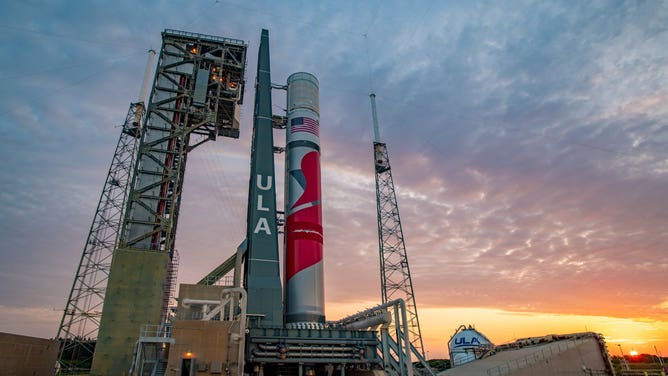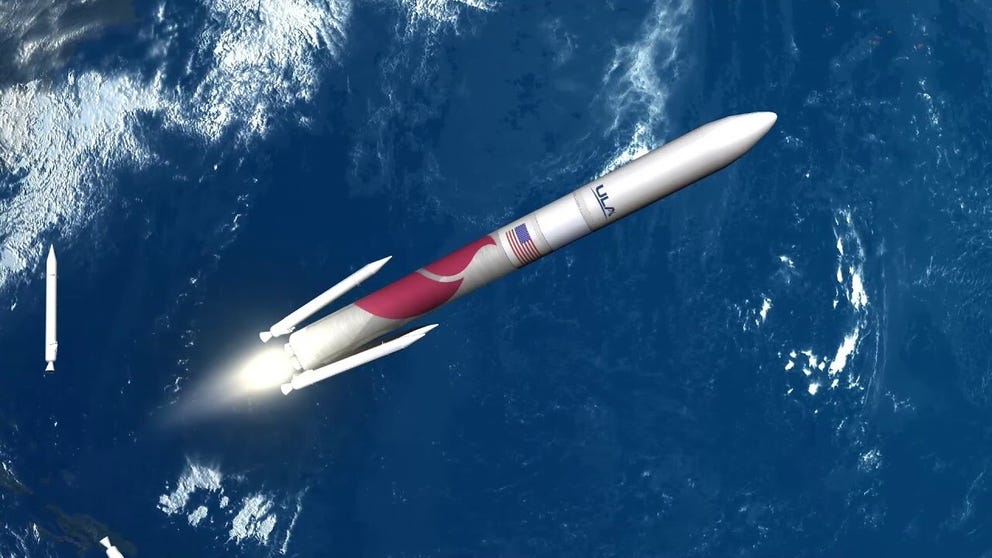Test fire inches ULA closer to first launch of Vulcan rocket from Florida
ULA ran through a countdown, fueling the booster and firing up Vulcan’s BE-4 engines for a few seconds at Cape Canaveral Space Station launch Complex 41. The static fire allowed ULA to test countdown and propellant loading operations.
United Launch Alliance Vulcan Centaur rocket preview
The United Launch Alliance is preparing to launch the new Vulcan Centaur rocket from Cape Canaveral, Florida.
CAPE CANAVERAL, Fla. – A new rocket is one step closer to launching on Florida’s Space Coast after United Launch Alliance says it successfully completed a flight readiness firing of the Vulcan rocket booster engines.
The Vulcan Centaur will eventually replace ULA's workhorse rocket, the Atlas V rocket, which uses Russian-built RD-180 engines. Vulcan will use two Blue Origin BE-4 engines and solid rocket boosters to provide up to 3.8 million pounds of thrust.
ULA had hoped to launch the first mission – a moon lander for Astrobotics carrying NASA payloads – earlier this year but needed to overcome a few more obstacles before its first spaceflight.
On Wednesday night, ULA ran through a countdown, fueling the booster and firing up Vulcan’s BE-4 engines for a few seconds at Cape Canaveral Space Station launch Complex 41. The static fire allowed ULA to test countdown and propellant loading operations.

The United Launch Alliance (ULA) Vulcan rocket successfully conducts a Flight Readiness Firing (FRF) at Cape Canaveral Space Force Base, Fla., on June 7, 2023 in preparation for the inaugural flight. (Photo by United Launch Alliance)
"Nominal run!" ULA CEO Tory Bruno said in a tweet.
In a statement, ULA said it is now "more than 98% complete with the Vulcan qualification program, with the remaining items associated with the final Centaur V testing."
The Vulcan has been assembled at the Florida launch site since early February. In March, while testing the rocket’s Centaur upper stage at NASA’s Marshall Space Flight Center, a fire on the test stand led to an investigation that still needs to be completed.

ULA's Vulcan booster at Cape Canaveral Space Launch Complex 41 in Florida. (Image credit: ULA)
"The team is reviewing the data from the systems involved in today’s test and, in parallel, continue with the Centaur V test stand anomaly investigation," ULA said after the successful FRF. "Pending the data review and the investigation results, we will develop a plan for launch. Testing is an integral part of our launch vehicle development program, and we will fly when we believe it is safe to launch."
The first mission, known as Cert-1, will launch Astrobotic's Peregrine lander to the moon. Based in Pittsburgh, Pennsylvania, Astrobotic was one of about a dozen companies selected under NASA's Commercial Lunar Payload Services program to deliver science payloads to the moon's surface. The robotic program will help NASA prepare for returning humans to the moon in a few years.
After the testing and investigation are complete, the payload will be mated to the Vulcan in the rocket hangar before the integrated rocket is rolled out to the launchpad.
